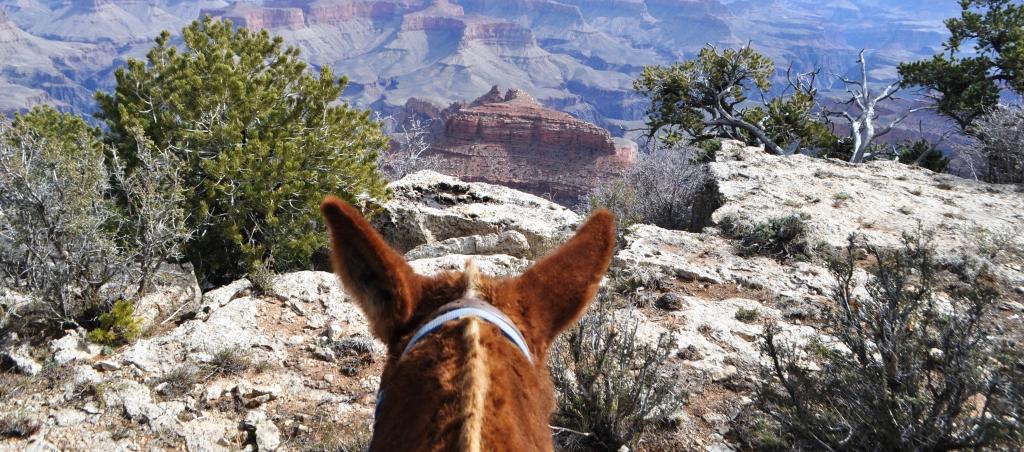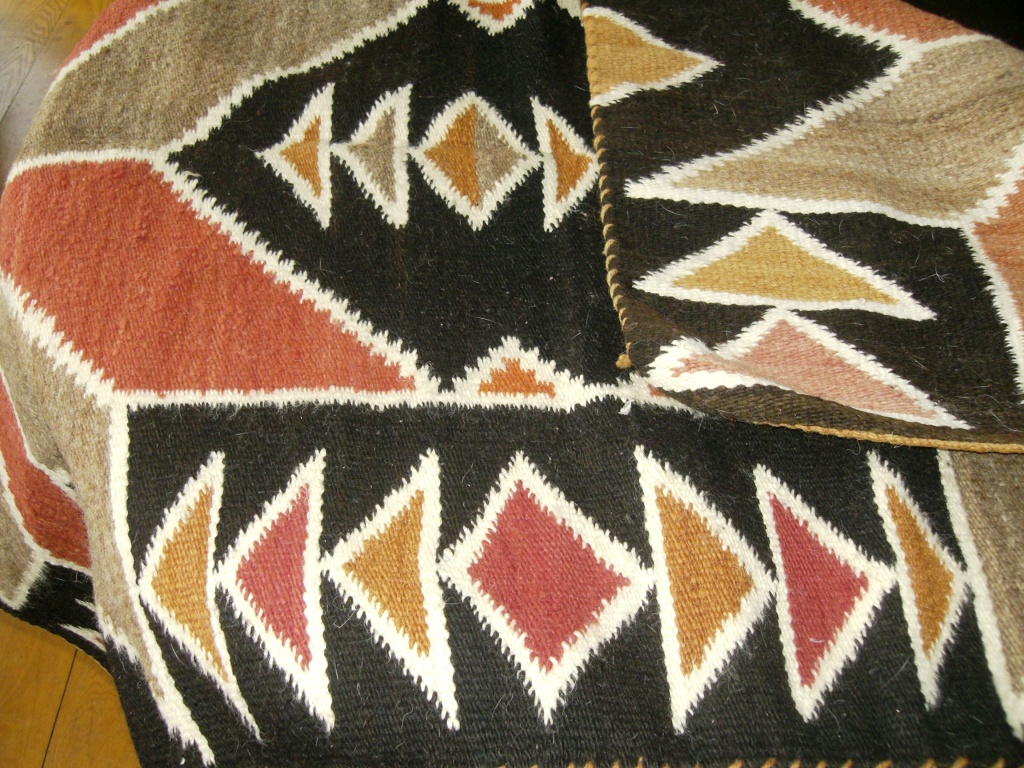I didn’t expect to like the mule. I’m something of an equestrian — some years more than others, but enough to be quite sure of my preference for the noble horse. And if, like me, you had never ridden a mule before, you might have a few stereotypes in mind: Something about stubbornness, and unresponsiveness, and a few other choice descriptions. No one ever says “fleet as a mule” or “friendly as a mule.”
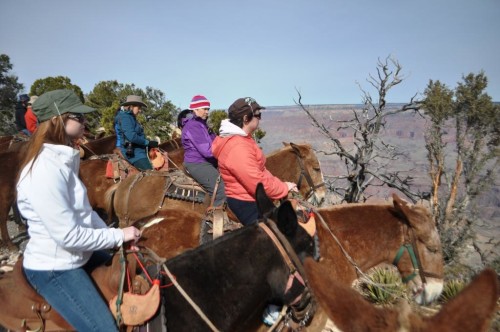
The truth of the matter is, for trail riding on difficult mountain terrain, there may be no more trusty steed than the humble mule. My mount for a morning ride along the Overlook Trail of the South Rim of the Grand Canyon is a chestnut named Tank, a hefty fellow who stands quietly as I mount, and stays put as the others in our group are helped aboard. There’s none of that “Help! How do you stop this thing?” that you so often see at the beginning of horseback trail rides; none of the mules are testing their riders by wandering around and pulling on the reins.
In Your Bucket Because…
- Two hours, just you and your mule and your fellow riders — and views of forever.
- The mules are well-trained with a perfect safety record.
- Good for: Families, photo buffs, adventurer travelers.
Compared to a mule, a horse is as stable as junkie off his meds. For a horse, every little distraction on a trail ride is something worthy of a hissy fit. A flower blowing in the breeze: “EEK! It’s a monster!” A bunny crossing the trail: “EEK! Another monster!” A piece of litter: “EEK!” — Well, you get the point by now. And a horse’s “EEK It’s a monster!” can take the form of snorting, rearing, shying away, or running, depending on who the rider is. Horses also have this uncanny ability — sort of like middle-schoolers with a substitute teacher — to pretty quickly figure out who is in charge. Power — and horses — abhor a vacuum. It is not the animal you want under you on the edge of a canyon that plummets 5,000 feet into the guts of the earth.
By contrast, Grand Canyon mules are babysitters. Before being assigned to tourists, each goes through a careful vetting process. By the time they are mounted by visitors whose previous riding experience consisted of a carousel at the Jersey Shore, nothing ruffles them. They plod along, ears forward, never pulling or startling. “Ho, hum, another rustling flower” the mule might think, if he bothers to notice it at all (although he might remember his horse lineage for just long enough to see if the rider will let it bend down to taste that flower.)
As far as behavior is concerned, most of our mules followed in an orderly procession, although once in a while our neat line got a little scraggly. As far as sure-footedness is concerned, mules are to horses what mountain goats are to elephants. In any event, Tank is not going to fall of the edge of the Grand Canyon — even if I tell him to. Mules are just not suicidal.
The Canyon Vistas Ride
The Mule Ride Operation at the South Rim of the Grand Canyon offers daily rides. On the classic overnight, riders go all the way down to Phantom Ranch at the bottom, and the next day ride back up. For many years, the day rides went about an hour down into the Canyon, then back up. A few years ago, the in-the-canyon day rides were swapped for a forested ride near the rim. Visitors complained of lack of views. Today, there’s a new riding trail right along the rim. And before you think that not going into the canyon might be a disappointing turn of events, consider the advantages:
- Riding downhill for an hour at a time is not all that comfortable. A mule’s normal gait is like a rocking chair. A downhill gait lumbers from side to side, like one of those Magic Fingers beds that has broken parts and faulty wiring.
- Beginning riders on the downhill ride often spent most of their time clinging in terror to the saddle horn as they watched the horse come within inches of the edge of the trail. Yes, on the rim trail ride, you go right up to the edge, but you’re on a comfy, wide plateau. It’s the difference between walking across the Hudson River on the George Washington Bridge — or on a tightrope.
- As its name promises, the Vista Ride gives you views, views, and more views. Yes, there were plenty of great views on the old in-the-canyon ride, but for a two-hour introduction to the Canyon, the views from the top are unparalleled.
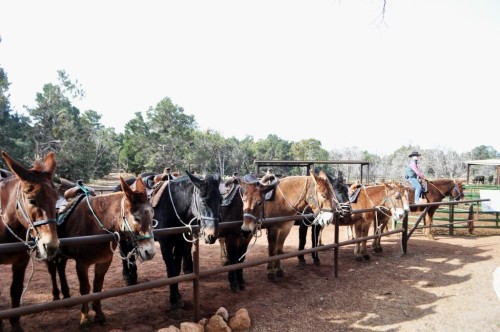
Guests are transported from the main barn to Yaki Barn near the South Kaibab trail in a park bus, with a guide who offers some historical notes peppered with jokes about mules. At the barn, riders get a safety briefing along with basic instructions — “Stop,” “Go,” “Turn,” and how to use the euphemistically-called “motivator” (a leather crop). Then, it’s time to mount up and head along a wooded trail toward the rim. During the ride, there are a few breaks for natural history and geology lessons from the wranglers, along with photo ops.
In my imagination, this first part of the ride is very much like the experience I picture the first explorers to have had. The plateau on the south side of the canyon is flat, covered with Ponderosa pines. As you ride through the scraggly dryland forest, there is absolutely no warning, not even a tiny inkling, of what lies ahead. And then you arrive at the Rim and find the earth cut open before you.
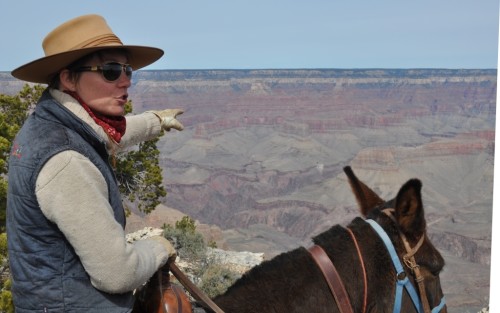
Those early explorer would have arrived on horseback, so as Tank carries me through the forest, I try and put myself in the mind of someone who has never seen the Canyon before until they reach the very edge — as we do only a few minutes later. Even if you’ve spent considerable time in the Canyon before, you can’t help but be awed by the spectacle that spreads out as far as you can see. You will have this spectacle to ponder for the entire rest of the ride.
Practicalities
- Book in advance, especially during vacation periods, and for Phantom Ranch overnight rides..
- The ride is a three hour time commitment: an hour to get on and off the mules and learn a bit about them, and two solid hours of riding. Day-rides go out twice a day during the high seasons, and once a day from mid-October to mid-March
- You’ve got to weigh less than 225 pounds fully clothed, and yes, they weigh you when you sign up to be sure. (Riders going into the Canyon for an overnight have to weigh less than 200 pounds, fully clothed). Riders must be at least 4 feet 7 inches. Children 15 and younger must be accompanied by an adult.
- Closed-toe shoes that fully cover your feet are required. Wear a hat for sun protection (with a string to keep it from blowing away), and long pants and long sleeved shirts.
- Give the terrain, it’s no surprise that these rides are run with a tight rein — ie, by the book. Don’t expect a flexible “anything goes” type of experience (even if you’re an experienced rider) — everyone rides by the book. It’s for everyone’s safety.
